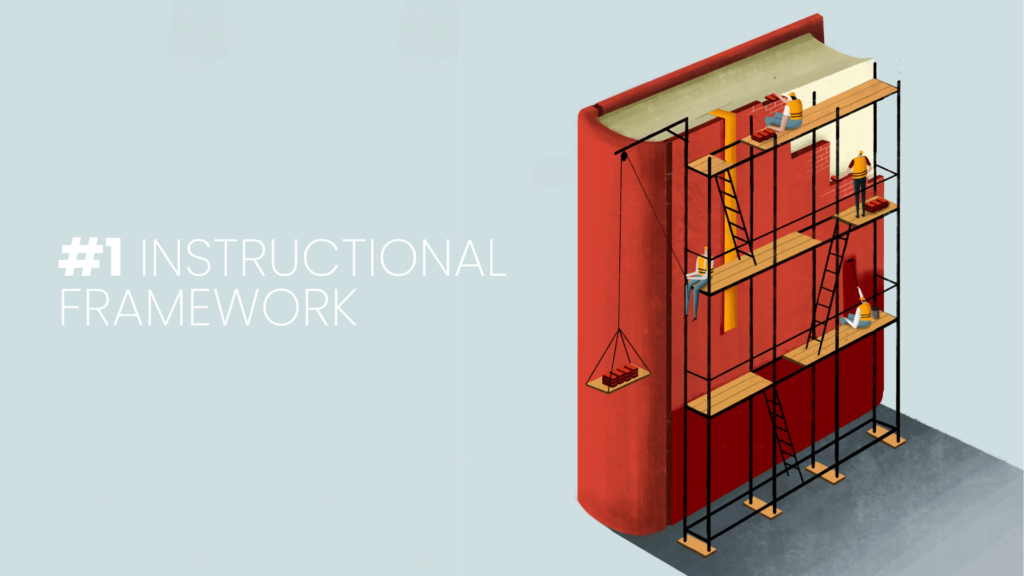
What Is a Scaffolding Curriculum?
In the world of education, there’s a term every homeschooling parent should know—scaffolding. It’s not just another buzzword. It’s the foundation of how students learn best. And if your curriculum isn’t built around scaffolding, your child could be falling behind without you even realizing it.
Let’s break it down.
What Is a Scaffolding Curriculum?
A scaffolding curriculum is designed to support your child at every stage of learning—building on prior knowledge, introducing new skills gradually, and removing support as confidence and ability grow.
Think of scaffolding like training wheels on a bike. At first, your child needs full support. As they grow stronger, you ease off, giving them the tools to ride on their own.
In curriculum terms, scaffolding looks like:
- Teaching one step at a time
- Revisiting previous concepts often
- Modeling every skill before expecting independence
- Offering structured support, then gradually handing off responsibility
It’s intentional, developmental learning—not chaos, not guesswork, and definitely not a “sink or swim” model.
Why Scaffolding Matters in Homeschool Curriculum
Most homeschool curriculums don’t scaffold well—if at all. They dump large concepts on students and expect immediate mastery. Or worse, they confuse repetition with support, assigning worksheets without ever actually teaching the skill.
Here’s why that fails:
- No structure = no retention
- Too much at once = overwhelmed learners
- No modeling = confusion and frustration
- Skipping steps = learning gaps that compound over time
A curriculum without scaffolding puts all the pressure on the student (and the parent) to make sense of it all. That’s not fair—and it’s not effective.
The Benefits of a Scaffolding Approach
✅ 1. Builds Confidence, Not Confusion
With scaffolding, students succeed at each small step before moving on. That success builds confidence and momentum, making kids want to keep learning.
✅ 2. Prevents Gaps in Understanding
Every new concept is built on a previous one. By structuring learning this way, students develop a solid foundation—not a shaky stack of disconnected facts.
✅ 3. Promotes Independent Learning (Eventually)
Scaffolding gives students the support they need early on, then gradually encourages independence. That leads to stronger critical thinking, better writing, and real academic growth.
✅ 4. Supports All Learning Styles
Because scaffolding uses step-by-step modeling, visual examples, verbal explanation, and practice, it supports visual, auditory, and hands-on learners alike.
How Essentials in Writing Uses Scaffolding to Teach ELA
At Essentials in Writing (EIW), scaffolding is at the core of everything we do. Our entire curriculum is designed around a simple, effective principle:
Teach. Model. Practice. Repeat. Then Master.
Here’s what that looks like in action:
- Each new writing skill is introduced with a short, easy-to-understand video lesson.
- The teacher models how to complete the assignment step-by-step—no guessing.
- Students complete short, focused exercises that apply exactly what they just learned.
- Lessons build in complexity over time, revisiting earlier concepts as students grow.
This process happens throughout every level, from sentence construction in the early grades to research writing and literary analysis in the upper levels.
We don’t throw students into advanced writing and hope they figure it out—we walk them there one clear step at a time.
Other Programs Skip the Scaffolding—and It Shows
Most writing curriculums are either:
- Overstructured and robotic, where kids memorize formats but don’t actually learn how to write
- Understructured and vague, where students are asked to write essays without ever being shown how
Neither works. Both lead to frustration, tears, and poor writing skills.
✅ Essentials in Writing avoids both extremes with a scaffolding structure that builds mastery through modeling, guided practice, and gentle, strategic release of support.
If Your Curriculum Doesn’t Scaffold, It’s Time to Switch
If your child is:
- Struggling to write
- Dreading assignments
- Not retaining what they’ve learned
- Asking, “What am I supposed to do?” over and over
That’s a curriculum problem—not a kid problem.
A good scaffolding curriculum helps your child:
- Understand what to do
- Build skills layer by layer
- Become a confident, independent writer
🎯 Ready to Make the Switch?
Essentials in Writing gives your child the structure and support they need to succeed—no guesswork, no overwhelm, no fluff.
Use code FLASH30APRIL for 30% OFF and experience the power of a curriculum that actually teaches.
👉 Explore Essentials in Writing today and give your child the scaffolding they deserve.




